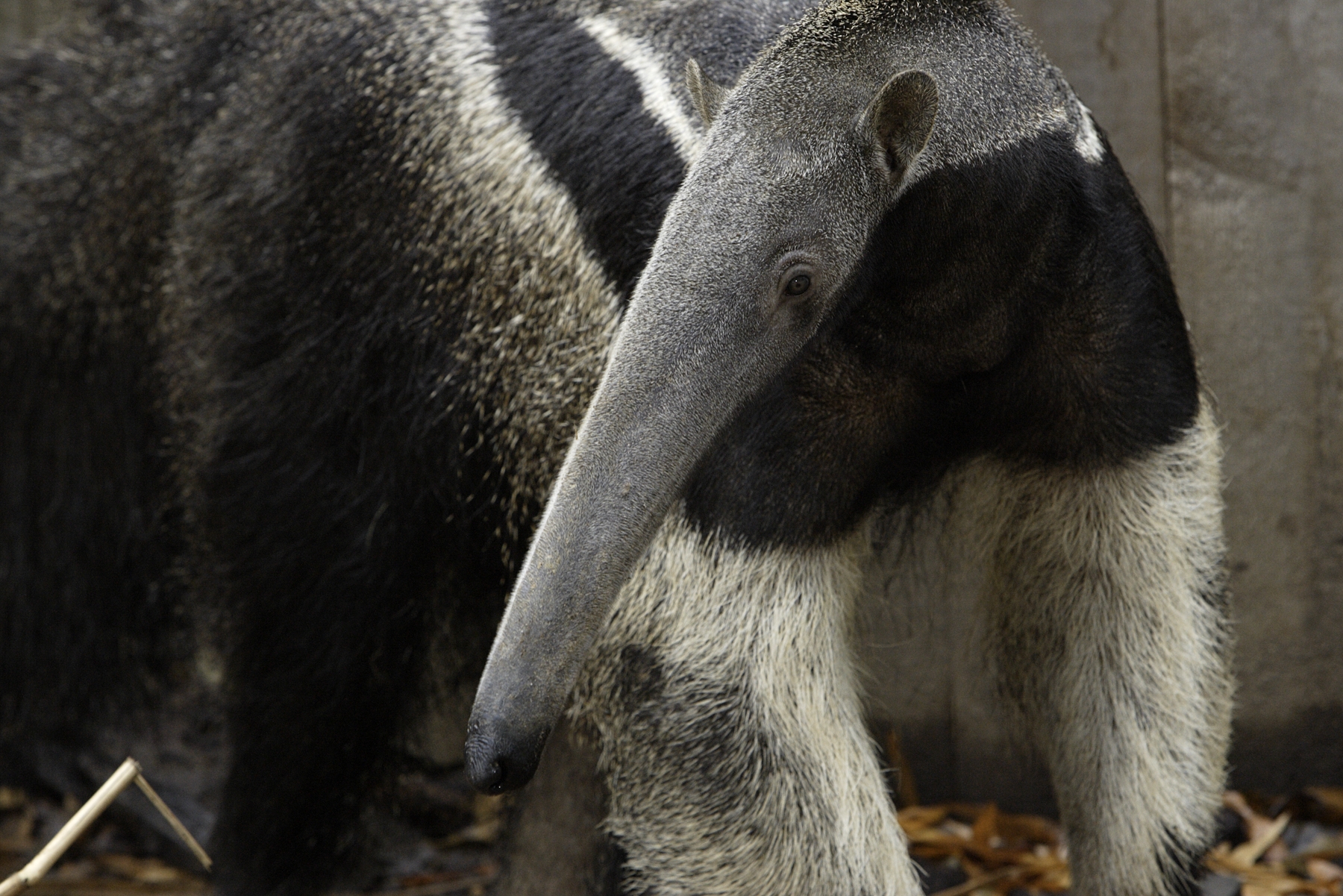Giant Anteater Born at the National Zoo
A giant anteater was born at approximately 7:30 p.m. Dec. 7 at the Smithsonian’s National Zoo. The pup is a male, and he is the Zoo’s third giant anteater birth. Female Maripi (ma-RIP-ee) bred with male Dante in April, May and June; Zoo animal care staff and veterinarians had been performing weekly ultrasounds since June on Maripi to monitor the baby and mother’s progress.
As to not disturb the experienced Maripi during birth, animal care staff monitored the birth via remote video camera. Within 20 minutes of being born, the pup started to climb up the tail of his mother as expected, and they both appeared to settle down for the night. However, early the next morning, the baby was found outside of the nest with a low body temperature while mother was asleep in the nest. The newborn was taken to the Zoo’s vet hospital, where he received a complete medical evaluation that included a controlled raise of his body temperature. As a precaution, Maripi was also taken to the vet hospital and given a complete medical evaluation.
The pup was reunited with his mother the same morning in hopes that she would care for him; staff was soon able to confirm that Maripi was producing milk and the pup appeared to be nursing. Both anteaters remained in the hospital under careful observation until this morning when they were returned to their exhibit. Veterinary staff released the duo after noting continued improvements in the pup’s weight and behavior over the past week.
“We will continue to closely watch Maripi and her pup in their indoor enclosure,” said Craig Saffoe, curator. “Thanks to the quick response by the keepers and vet staff the morning after the pup’s birth—coupled with continuous attention over the past few weeks—the two look like they are gaining strength each day. We are not completely out of the woods yet, but remain cautiously optimistic for a complete recovery.”
Father Dante is separated from mother and baby, and—like male giant anteaters in the wild—will play no part in the rearing of offspring. In summer 2007, Maripi gave birth to a female, Aurora, who now resides at the Zoo Parc de Beauval in France. Cyrano was born in March 2009; he now lives at the Nashville Zoo.
A Species Survival Plan for giant anteaters was recently developed by the Association of Zoos and Aquariums. Though zoos have been maintaining a captive population of giant anteaters, they are now developing a master plan that identifies population management goals. The SSP presents recommendations to zoos to ensure the sustainability of a healthy, genetically diverse and demographically varied giant anteater population.
“We were so thrilled for Dante and Maripi to have another pup,” said Marie Magnuson, giant anteater keeper. “Now that the giant anteater is part of an SSP, the National Zoo will be part of a larger collaborative management group with zoos across the country working to maintain the long-term survival of the species.”
Giant anteaters live in the grassland savannas, swamps, humid forests and wetlands of Latin America—from Belize to Argentina. Anteaters use their keen sense of smell to detect termite mounds and anthills and tear them open with strong claws. They then gather their prey using a 2-foot-long tongue covered with very sticky saliva. In addition to ants and termites, giant anteaters in the wild will also eat ripe fruit that has fallen from the trees and the eggs of
ground-nesting birds. Dante and Maripi feed mostly on a prepared insectivore chow and receive fruit and hard-boiled eggs as treats.
The anteaters can be seen on exhibit next to Lemur Island, weather permitting. Maripi and Dante have lived at the National Zoo since 2006 and are on loan from the Nashville Zoo.
# # #
SI-437-2010
Photo is of Maripi the giant anteater.
Photo credit: Mehgan Murphy, National Zoo.

